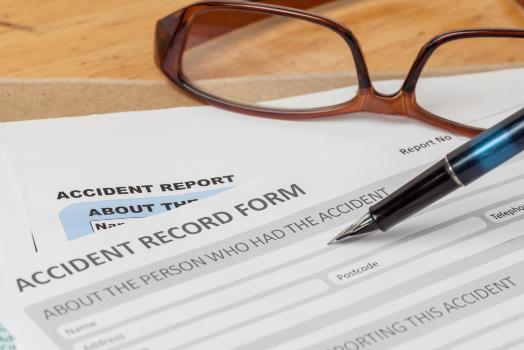How Car Accident Claims Work in Ontario, Canada
A Brief Overview of How Car Accident Claims Work in Ontario, Canada
Car accidents can be traumatic and life-altering experiences, and they can cause serious physical injuries, emotional distress, and financial burden. If you’re in a car accident in Ontario, you may have to file a claim to receive compensation for your damages or injuries. But the process can be confusing and overwhelming, especially when you need help understanding how car accident claims work. This guide will take you to step by step through the process and explain everything you need to know about how car accident claims work in Ontario. Whether you’re dealing with damages to your vehicle or seeking compensation for personal injuries, we’ll show you how to navigate the process and ensure that you get the compensation you deserve. So, let’s dive in and find out how car accident injury claims work in Ontario.



How Car Accident Claims Work in Ontario, Canada
Making Sense of How Car Accident Claims Work in Ontario, Canada
Regarding car accidents in Ontario, it’s essential to understand how car accident claims work. The process can be complicated and confusing, but knowing what steps to take to get the compensation you deserve is essential. In this guide, we’ll go over how car accident claims work and what you can expect.
First, it’s important to know that there are two types of car accident claims: property damage claims and personal injury claims. Property damage claims involve damage to your vehicle, while personal injury claims involve compensation for any physical or emotional injuries you sustained in the accident.
In Ontario, all drivers must have automobile insurance. This insurance covers you in the event of an accident and will pay out for damages or injuries you sustained. To file a claim, you’ll need to contact your insurance company and provide them with information about the accident. This includes the date and time of the accident, its location, and any witnesses names and contact information.
When you report the accident to your insurance company, they’ll assign an adjuster to your case. The adjuster will investigate the accident and determine who was at fault. They’ll also be responsible for assessing your vehicle’s damage and determining the compensation you’ll receive.
The process can be more complicated when it comes to personal injury claims. In Ontario, personal injury claims have a two-year deadline from the date of the accident, according to the Statute of Limitations. This means you have two years from the accident date to file a claim for personal injury compensation. When filing a personal injury claim, you must provide your insurance company with medical documentation and other evidence supporting your claim.
When negotiating a settlement, it’s essential to have a good understanding of what you’re entitled to. This includes compensation for your medical expenses, lost income, and other expenses related to the accident. You may have to go to court if you cannot agree with the insurance company.
It’s important to remember that insurance companies are making money and will do everything they can to minimize the compensation they have to pay out. That’s why it’s essential to have a good understanding of your rights and to work with an experienced personal injury lawyer. a lawyer can help you navigate the process, negotiate your claim, and ensure you get the compensation you deserve.



How Do Car Accident Claims Work in Ontario, Canada
Generally, How Do Car Accident Claims Work? Expert Insight From The Pros in Ontario, Canada
Car accidents are an unfortunate reality that millions of people face every day. Whether you’re a seasoned driver or just starting, an accident can occur anytime. Understanding how car accident claims work in Ontario can be daunting, but it is crucial for anyone involved in a car accident. This guide provides expert insight into how do car accident claims work in Ontario so that you can make informed decisions about your next steps.
It’s crucial to know that car accident claims in Ontario fall under two categories: no-fault and fault-based. No-fault claims are when you seek compensation for injuries or damages from your insurance company, regardless of who caused the accident. Fault-based claims are when you seek compensation from the insurer of the other driver if they are responsible for the accident.
- Report the Accident
The first step in the process of how car accident claims work in Ontario is to report the accident to the police immediately, even if the damages are minor. If there are any injuries, you should also seek medical attention. - Notify Your Insurance Company
Next, you should notify your insurance company about the accident. Upon filing your claim, your insurance company will issue you a claim number and assign an adjuster to your case. The adjuster will be your point of contact throughout the claim process. - Gather Evidence
Collecting as much evidence as possible about the accident is essential, including pictures of the damages, the police report, and witness statements. This information will be useful in determining who is responsible for the accident and how to help support your claim. - No-Fault Claims
If you’re filing a no-fault claim, your insurance company will cover your medical expenses, lost wages, and other expenses related to the accident. You don’t have to prove that someone else caused your injury, but you have to prove that you were injured. - Fault-Based Claims
If you’re filing a fault-based claim, you must show that the other driver was at fault. This may require hiring a lawyer to help you gather the necessary evidence and negotiate a settlement with the other driver’s insurance company. - Settlement
Once the insurance companies have gathered all the evidence and determined who is at fault, they will negotiate a settlement. This may involve an exchange of offers between the insurance companies or a formal mediation or arbitration process. - Receive Compensation
You will receive compensation for your damages or injuries upon settling your case. This may include payment for medical expenses, lost wages, or property damages.
Understanding how do car accident claims work in Ontario is crucial if you’re involved in a car accident. The process can be confusing if you seek compensation for damages to your vehicle or personal injuries. But with the right information, you can ensure you receive the compensation you deserve. If you need help navigating the process, consider seeking the advice of a personal injury lawyer, as they can provide guidance and ensure your rights are protected.



The Anatomy of a Personal Injury Claim in Ontario, Canada
How Does a Car Accident Claim Work? The Anatomy of a Personal Injury Claim in Ontario, Canada
Injuries sustained in a car accident can be a traumatic and stressful experience, and many people may not know how to claim personal injury. But understanding the anatomy of a personal injury claim can help you feel more in control of the situation and ensure you receive the compensation you are entitled to.
To start, it’s important to understand that a personal injury claim is a legal process that seeks to recover damages for injuries suffered in a car accident. This can include medical expenses, lost wages, pain and suffering, and other damages.
When making a personal injury claim, it’s important to know that you have a limited time to file the claim, so it’s important to act quickly. In most states, you have two years from the date of the accident to file a personal injury claim.
- The first step in making a car accident claim is to gather information about the accident. This can include collecting witness statements, taking photos of the scene, and documenting any injuries. You should exchange contact and insurance information with the other driver.
- Next, you should file a report with the police, which will help to establish the facts of the accident. You should also contact your insurance company to report the accident and let them know that you plan to make a claim.
- The next step is to obtain medical treatment for your injuries. This is important for your health and well-being, as well as for your personal injury claim. You should see a doctor as soon as possible after the accident to document your injuries.
- Once you have received medical treatment, you should gather all your medical records and bills related to the accident. This information will calculate the number of damages you are entitled to receive.
- The next step in the process is to negotiate with the insurance company. This can be a complicated and time-consuming process, so it’s important to have an experienced personal injury attorney on your side.
The insurance company will likely offer you a settlement lower than what you are entitled to receive. Your injury attorney can help you negotiate a fair settlement covering all your damages.
If an agreement cannot settle, filing a personal injury lawsuit may become necessary. This process involves a judge or jury deciding the compensation you are entitled to receive.



How Do Car Accident Injury Claims Work in Ontario, Canada
Taking Charge After An Accident: How Do Car Accident Injury Claims Work in Ontario, Canada
Car accidents can be a traumatic experience and can leave you feeling unsure about what to do next. If you have been injured in a car accident, taking charge and understanding how car accident injury claims work in Ontario is important. This will help you get the compensation you deserve for your injuries and losses.
The Ontario Insurance Act and the Statutory Accident Benefits Schedule (SABS) govern car accident injury claims in Ontario. This legislation identifies the benefits and entitlements available to injured individuals after a car accident.
To make a car accident injury claim, you must notify your insurance company immediately after the accident. You should also seek medical attention to document your injuries and receive the necessary treatment. This will also help to establish the link between your injuries and the car accident.
Once you have notified your insurance company, they will provide you with a claim number, which you will use throughout the claim process. Additionally, you may be required to furnish documentation, including a police report, a medical report, and receipts for any expenses incurred due to your injuries.
The insurance company will assess your claim and determine the amount of compensation that is payable. This may include coverage for medical expenses, lost income, and rehabilitation costs. You can negotiate and dispute the decision if you disagree with the amount offered.
In conclusion, understanding how car accident claims work in Ontario is essential for anyone involved in a car accident. The process can be complicated, but by reporting the accident, notifying your insurance company, gathering evidence, negotiating with the insurance company or hiring an experienced personal injury lawyer, you can ensure that you receive the compensation you deserve. There are two categories of claims related to car accidents: those involving personal injury and those involving property damage. The Statute of Limitations for personal injury claims in Ontario is two years from the date of the accident. It’s also crucial to know the difference between no-fault and fault-based claims and how they work in Ontario.
This guide provides general information about legal matters, but it is not a substitute for professional legal advice. Legal issues can be complex and require an in-depth understanding of the law to protect your rights. Therefore, if you have any questions or concerns regarding your case, always seek the assistance of a qualified lawyer who can provide tailored advice on how to address your situation best.



*The laws pertaining to automotive injuries are complex and are constantly evolving. The information on this website was not written by legal professionals and should not be considered legal advise. Please contact a professional personal injury lawyer serving Ontario for the most up to date and accurate information.






